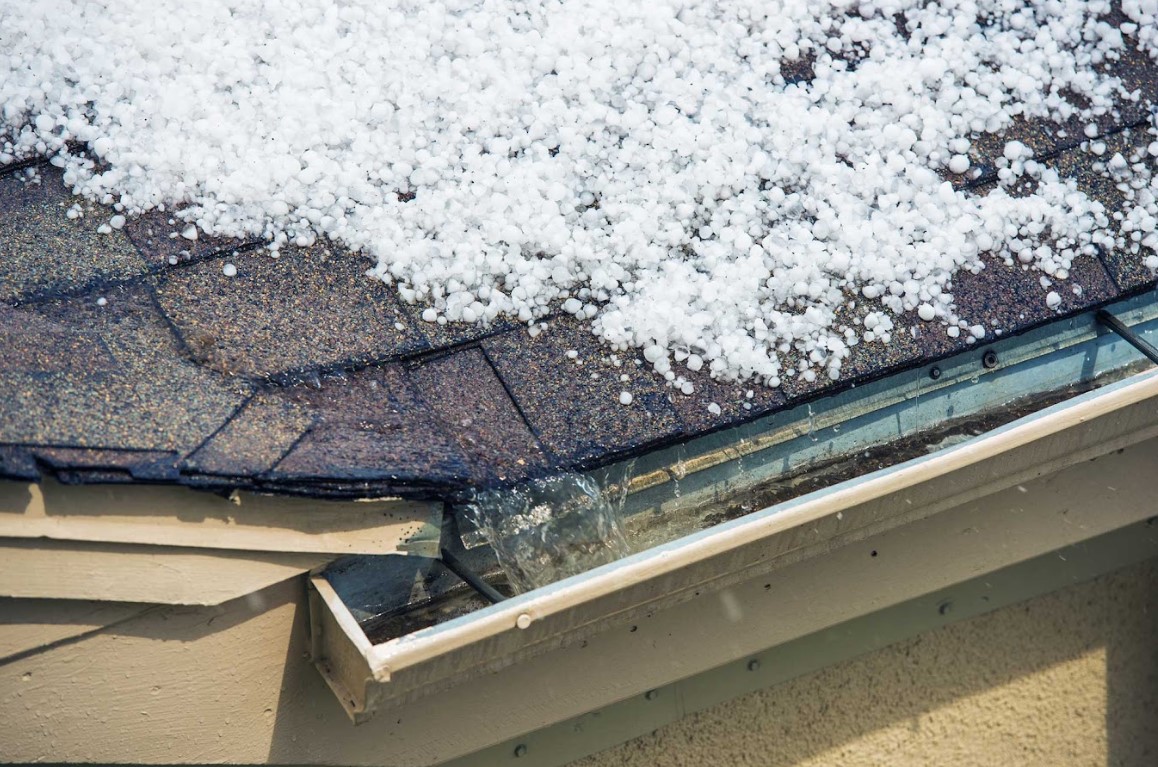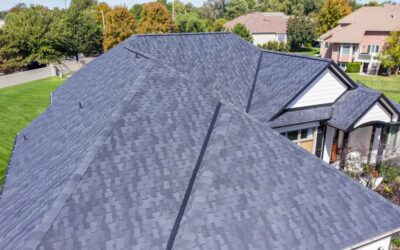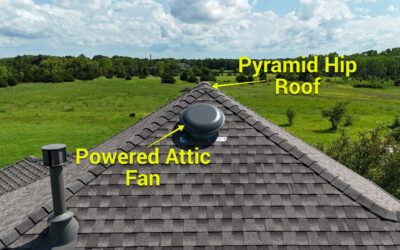Here’s What the September 3rd Hailstorm Means for Kansas Homeowners
On the evening of September 3rd, 2025, powerful supercell storms raced across central and south‑central Kansas, blasting communities including Wichita, Salina, McPherson and Harvey County with hail as large as baseballs. If you’re a homeowner in one of those areas, your roof likely took that hit—whether you saw the damage or not.
At Rhoden Roofing LLC, we’ve been stepping up on rooftops throughout the region since that storm, uncovering damage most folks don’t notice from the ground—hail‑dented shingles, cracked vents, granule loss and early signs of water intrusion. That’s the kind of damage that looks minor today but costs far more tomorrow.
In this article we’ll walk you through:
- What happened on September 3rd and why it matters for your home
- How to spot hail damage—even the hidden kind
- What you need to do before calling your insurance company
- How to decide between repair and full replacement to protect your home’s value and get the best return on your investment
Need help now? Rhoden Roofing LLC can help.
Why That Hailstorm Still Matters for Your Roof in Kansas
This wasn’t just a little hail event. The National Weather Service in Wichita documented hail up to 2″–3″ in diameter— that’s tennis-ball to baseball size. Hail that large can punch through shingles, damage flashing, crack skylights, dent gutters, and weaken your roof’s entire protective system.
Even Class 4 impact-resistant shingles — rated for 2″ hail — can be compromised by storms this severe. Some areas saw hail exceeding that size, which means even high-end roofing systems — and surrounding components like gutters or vents — should still be professionally inspected to confirm there isn’t any hidden damage.
Where the Storm Struck Hardest
- Wichita Metro Area (especially northeast & northwest sectors)
- Harvey County (including Newton, Sedgwick)
- McPherson County (McPherson, Galva)
- Salina and surrounding communities
Here’s why this matters: When a roof takes that kind of impact, you don’t always see the damage immediately—but every freeze‑thaw cycle, every heavy rain, every strong wind event makes that damage worse. And around Wichita, where we deal with hail, high winds and rapid weather changes, the roof you installed five years ago might now fail prematurely if it got hit.

What You Should Know Before Calling Your Insurance
If that hail hit your home, you want to be in control. Here’s your prep checklist:
- Get a licensed roof inspection as soon as you can
- Photograph visible damage: dents, dark spots, broken vents, granules in gutters
- Pull your homeowner’s policy and check your deductible + coverage for hail/wind
- Request a detailed written estimate that meets insurance standards
Pro tip: Your insurance adjuster may only spend 5‑10 minutes on your roof. You need to make sure the full scope of damage is documented.
If possible, ask a reputable roofing contractor to join the adjuster during the inspection. A contractor who understands roofing systems and insurance processes can advocate for a more thorough and accurate assessment — and help ensure no damage is overlooked.
Step‑by‑Step Guide: Protecting Your Roof After Hail Damage
Don’t Assume “Everything Looks Fine” Means It Is
Even if you don’t see missing shingles or leaks, that doesn’t mean your roof escaped damage. Hail can bruise shingles beneath the surface, knock granules loose, or crack critical components like flashing and pipe boots. These aren’t always visible from the ground — or even obvious without a trained eye.
Have a reputable roofing contractor inspect it and walk you through photos documenting your roof’s condition.This ensures you’re not just taking someone’s word for it — you’re seeing real evidence, asking smart questions, and making decisions based on facts.
Beware the Out‑of‑Town Storm Chaser
After major hailstorms, it’s common for roofing companies to flood into Kansas from out of state — especially from Oklahoma, Texas, or Florida. These crews chase storm paths, set up shop quickly, book as many jobs as possible, and leave town just as fast — often before warranty issues even surface.
Be cautious with any roofing crew that just arrived after the storm. Many aren’t licensed in Kansas and don’t have a local presence. If problems come up months later, you’re often left with no support and no accountability.
Before signing anything, verify that your contractor is licensed in the state, carries proper insurance, and can show actual work completed in your area. A quick way to spot red flags? Check how long they’ve been operating locally — and scan recent Google Reviews to see what real homeowners are saying.
Don’t Fall for “We’ll Waive Your Deductible”
Some roofing contractors — especially those that show up right after a storm — may offer to “eat” or waive your insurance deductible to win your business. It might sound like a deal. It’s not.
Waiving a deductible is illegal in Kansas, and it’s a tactic commonly used by out-of-town companies that won’t be around if problems arise later. As we shared in our article on deductible fraud:
“If they break the law to earn your business, they’ll break your trust to keep it.”
Any contractor willing to bend the rules on insurance is likely cutting corners on your roof, too. Don’t take the risk. Choose a company that operates with integrity — from the first estimate to the final inspection.
When you’re comparing estimates, don’t just ask who can do it cheaper — ask who will do it right, and still be around years from now.
Know When Repair Just Isn’t Enough
If you’ve got multiple impact points, you’re 10+ years into your roof’s lifespan, or your shingles aren’t Class 4 or better — repair may only delay the inevitable. In many cases, full replacement is a smarter investment.
Need a simple action plan to follow? Our post on Smart Steps to Take After Storm Damage in Wichita walks you through what to do from the moment the skies clear.
Deep Dive: Roofing Materials That Actually Handle Hailstorms in Kansas
After the September 3rd hailstorm hit Wichita, we heard the same question from dozens of homeowners: “What kind of roof can actually take a hit like that and not fall apart?”
The truth is, most roofs aren’t designed for baseball-sized hail. But a few systems are — and if you’re already replacing your roof, this is your chance to invest in one that performs better and delivers real long-term ROI. Why? Because impact-rated materials don’t just last longer — they can qualify you for insurance discounts, reduce repair costs, and hold up better in the next major storm.
Here’s how the most common roofing materials perform when Kansas weather gets aggressive:
| Material Type | Hail Resistance | Lifespan | Pros | Cons |
| Standard Asphalt Shingles | Low | 15–25 years | Affordable upfront | Susceptible to hail damage |
| Impact-Resistant Shingles | Good | 25–35 years | Better performance; may qualify for insurance credits | Slightly higher cost upfront |
| Metal Roofing | Excellent | 40–70 years | Top durability; reflective and energy-efficient | Higher initial investment |
| Synthetic Slate/Tile | Excellent | 50+ years | Long lifespan; premium curb appeal | Heavyweight; premium material cost |
Even the most durable roofing materials can fail prematurely if they’re not installed correctly. Hail-resistant shingles, metal panels, synthetic tiles — they all rely on the precision and experience of the crew putting them in place. And that’s where too many out-of-town contractors fall short.
At Rhoden Roofing LLC, we don’t just install roofs. We back our work with a Lifetime Workmanship Warranty, because we know roofing failures often come down to the crew—not the product. We’ve replaced too many “warrantied” roofs that were installed by someone who disappeared after the first windstorm.
If you’re investing in a new roof after hail damage, don’t just look at the materials. Look at who’s installing them — and whether they’ll be around to stand behind the work.
Hail Damage FAQs for Wichita Homeowners
Hailstorms are a fact of life in Kansas — but that doesn’t mean dealing with the damage should feel overwhelming. Whether you’re responding to a recent storm or prepping for the next one, these are the most common hail-related roofing questions we hear from homeowners across Wichita and the surrounding area.
Was my home likely impacted by a hailstorm?
If your home is in Wichita, McPherson, Salina, or nearby areas and a hailstorm recently passed through, there’s a strong chance your roof sustained some level of damage. Even if it looks fine from the ground, only a professional inspection can uncover subtle but costly issues like bruised shingles or cracked flashing.
What does hail damage actually look like on a roof?
Hail damage on a roof can appear as missing granules, dented shingles, cracked flashing, soft spots, or bent metal vents. These signs may be hard to spot without getting on the roof, but they can compromise the system over time and lead to leaks or mold.
Will my insurance cover roof damage caused by hail?
Yes, most homeowners insurance policies in Kansas cover hail damage, whether it results in repair or a full roof replacement. The key is to document the damage promptly and file your claim within your policy’s timeline. Rhoden Roofing LLC can guide you through every step — from inspection to meeting with the adjuster.
How soon should I file a claim after hail hits my roof?
You should file a claim as soon as possible after a hailstorm. Acting quickly gives you the best chance to get full coverage and prevents further issues like water intrusion, insulation damage, or denied claims due to delays.
Most homeowners insurance policies have a one-year deadline from the date of loss to file a claim, but that can vary by carrier and policy. Always check your policy documents or contact your insurance provider to confirm your timeline. The sooner you get a professional inspection and document the damage, the better positioned you’ll be to get your claim approved.
Can I just repair hail damage, or will I need a new roof?
You can repair your roof after a hailstorm if the damage is isolated and the rest of your roofing system is in good condition. But if your roof is older, has widespread impact marks, or shows underlying issues, full replacement may offer better long-term protection — and could be covered by insurance.
How much does a roof replacement cost after hail damage?
The cost to replace a hail-damaged roof in Wichita usually ranges from $8,000 to $20,000, depending on size, slope, materials, and how extensive the damage is. In most cases, insurance covers the majority of the cost. We also offer financing options to make the investment more manageable.
Final Word: This Storm Was a Wake‑Up Call—Don’t Treat It Like Business As Usual
The September 3rd hailstorm delivered harsh real‑world tests to thousands of homes. If you skipped inspection—or assumed no visible sign means no damage—your roof probably didn’t pass.
At Rhoden Roofing LLC, we’re here not just to fix roofs, but to empower homeowners with smart decisions, lasting protection, and genuine value:
- Licensed, certified crews with deep local experience
- Premium materials built for Kansas weather
- Real warranties and “we stand behind our work for the lifetime of your roof” commitment
- Thousands of satisfied homeowners in the region
Don’t wait for a leak to confirm what the hail already damaged. Schedule your free hail-damage inspection with Rhoden Roofing LLC today.



